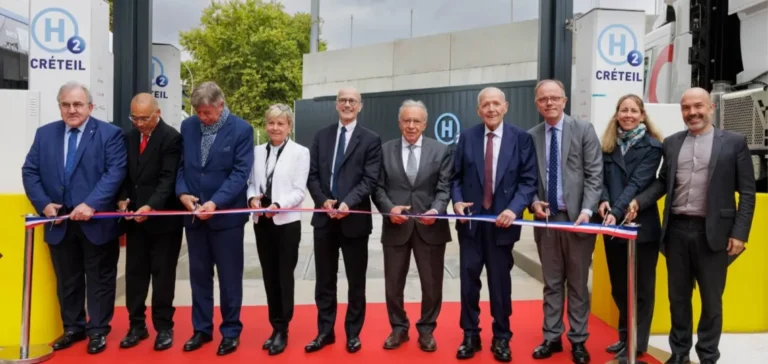The city of Créteil is hosting the first renewable hydrogen production and distribution station in France directly connected to an Energy Recovery Unit (ERU). Led by the Syndicat mixte de traitement des déchets urbains du Val-de-Marne (SMITDUVM), SUEZ, SIPEnR and Banque des Territoires, this project aims for an initial production of one tonne of hydrogen per day, generated from electricity produced by the incineration of household waste. The H2 Créteil station follows a local energy valorisation approach.
Expandable production fully powered by urban waste
The H2 Créteil consortium plans to double production capacity to two tonnes per day. SUEZ, which operates the Créteil ERU, provides the land, water and electricity needed for water electrolysis. SIPEnR, a subsidiary of Sipperec, ensures the legal and financial engineering of the project, while Banque des Territoires completes the financing under the European Connecting Europe Facility (CEF) Transport programme.
A strategic logistics hub for hydrogen mobility in Île-de-France
Located twelve kilometres from Paris, at the intersection of the A86, RN6 and RN406 roads, the station is designed to serve bus line 103 operated by the Régie autonome des transports parisiens (RATP), refuse collection trucks from Grand Paris Sud Est Avenir, as well as private vehicles. The station will operate 24/7 and is accessible through the FillnDrive application, which provides real-time information on hydrogen availability and pricing.
An infrastructure backed by public and European stakeholders
The project’s financing also benefits from support by the French Agency for Ecological Transition (ADEME), the Île-de-France Region and the European Commission. The goal is to strengthen the supply of alternative fuels in the region. Hydrogen produced in Créteil can also be distributed to other regional stations.
An economic and industrial positioning strategy
According to the project promoters, the cost of hydrogen produced will be competitive with diesel, while preventing the emission of approximately 1,500 tonnes of CO2 equivalent per year. This industrial approach relies on the direct conversion of household waste into usable energy for transport, reducing reliance on fossil fuels.
Meeting the growing demand for local transport solutions
The infrastructure is part of the territorial strategy to develop autonomous, low-carbon mobility. Hydrogen-powered vehicles will be able to operate within the low-emission zone of the Greater Paris Metropolis. The site’s location is intended to optimise logistics flows while providing a concrete solution to local energy demand.






















